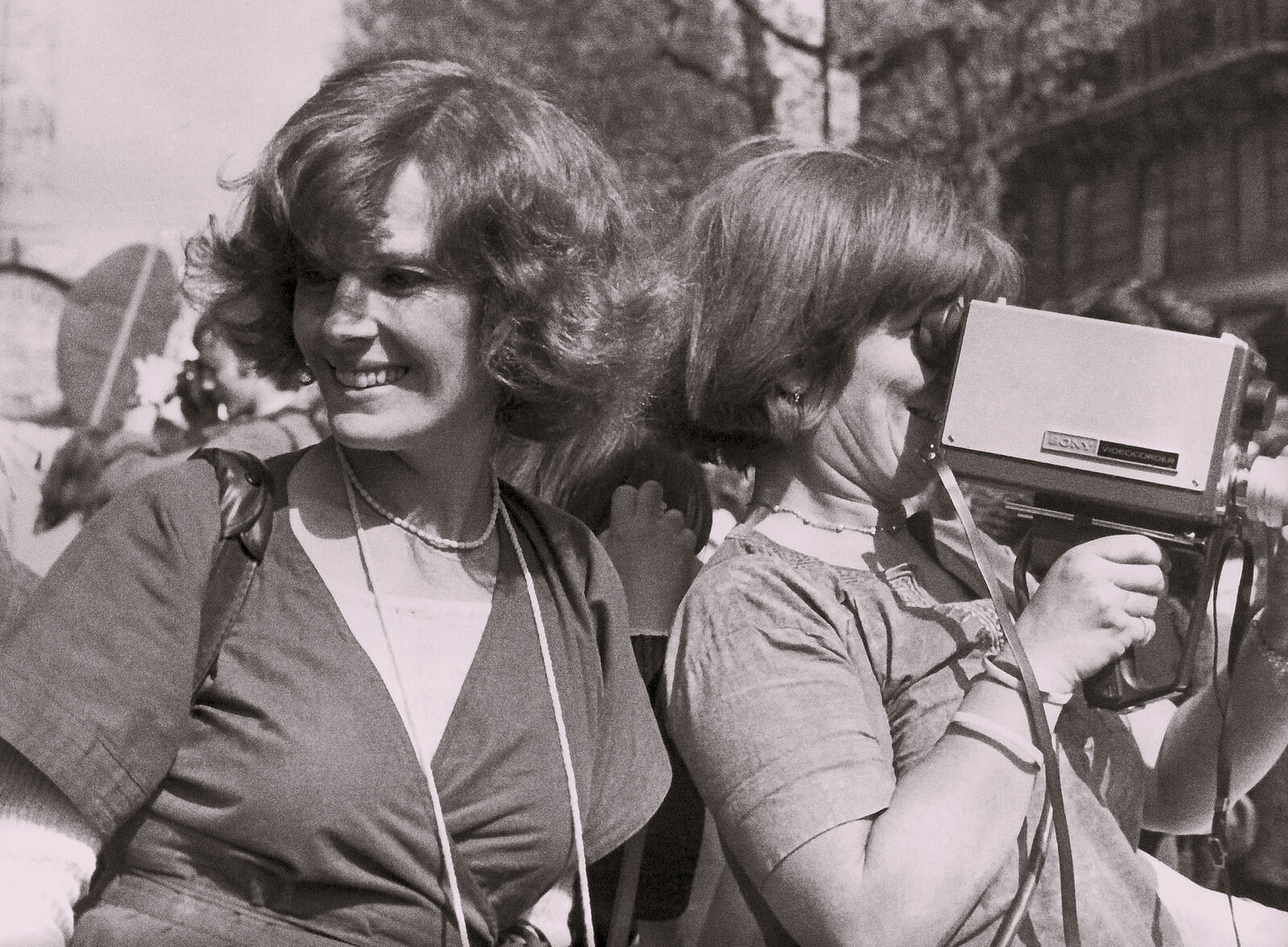Delphine Seyrig and the Feminist Video Collectives of 1970s and 1980s France
February 25–May 7, 2023
Entrance Stauffenbergstraße
Schlossplatz 2
70173 Stuttgart
Germany
Hours: Tuesday–Sunday 11am–6pm,
Wednesday 11am–8pm
T +49 711 223370
zentrale@wkv-stuttgart.de
An exhibition by the Württembergischer Kunstverein Stuttgart.
Organized by Museo Nacional Centro de Arte Reina Sofía Madrid.
In collaboration with Württembergischer Kunstverein Stuttgart, Kunsthalle Wien (Vienna) and Centre audiovisuel Simone de Beauvoir Paris.
Curators: Nataša Petrešin-Bachelez, Giovanna Zapperi
Curatorial assistance: Julia Hartmann
Press and professional preview: Friday, February 24, 2023, 11am
Opening: Friday, February 24, 2023, 7pm
Opening program: Saturday, February 25, 2023, 1pm, including an exhibition tour with the curators at 2:15pm, and a panel with Natasa Petresin-Bachelez, Giovanna Zapperi, Nicole Fernández Ferrer and Julia Hartmann. Moderation: Iris Dressler.
Artists: Fani Adam, Etel Adnan, Florence Assouline, Claire Atherton, Ti-Grace Atkinson, Mary Barnes, Cathy Bernheim, Danièle Bordes, Aloïse Corbaz, Françoise Dasque, Micha Dell-Prane, Catherine Deudon, Marguerite Duras, Éditions des Femmes, Anne Faisandier, Claire Goriot, Henriette Grindat, Ellsworth Kelly, Erica Lennard, Guy Le Querrec, Les Insoumuses, Babette Mangolte, Rosine Nusimovici, Ulrike Ottinger, Brigitte Pougeoise, Michèle Richer, Nadja Ringart, Yvette Roudy, Carole Roussopoulos, Paul Roussopoulos, Carlos Santos, Abraham Ségal, Delphine Seyrig, Valerie Solanas, Vidéa, Ioana Wieder and others
Defiant Muses. Delphine Seyrig and the Feminist Video Collectives of 1970s and 1980s France focuses on the intersection between the histories of cinema, video, and feminism: the exhibition sheds light on a network of creators and political figures around the actress, videomaker, and activist Delphine Seyrig to sketch a history of feminism as media history.
Delphine Seyrig (1932–1990) is best known for the roles she played in French auteur cinema, most notably in Alain Resnais’ L’année dernière à Marienbad (Last Year at Marienbad) (1961), where she became the symbol of an idealized and sophisticated femininity. But “acting” was not merely a profession for Seyrig: during the 1970s, she became engaged in various collaborations within the framework of the feminist movement. At the same time, working with women filmmakers such as Chantal Akerman, Marguerite Duras or Ulrike Ottinger allowed her to explore a variety of female roles and to undo her own image as a diva.
In 1975, she starred in Chantal Akerman’s iconic feminist film Jeanne Dielman. 23 quai du Commerce, 1080 Bruxelles, which was voted the best film of all time in a 2022 poll by the British film magazine Light and Sound.
Around 1975, together with activist video maker Carole Roussopoulos and translator Ioana Wieder, she produced a series of videos under the collective name Les Insoumuses (Defiant Muses). In their tapes, such as Sois belle et tais-toi! [Be Pretty and Shut Up!] (1976), SCUM Manifesto (1976), and Maso et Miso vont en bateau [Maso and Miso go boating] (1976), video became an emancipatory tool and an agent of political activism. In 1982, the three women established the Centre audiovisuel Simone de Beauvoir in Paris, thus providing an unprecedented audiovisual archive of the feminist struggles of the time, in and beyond France, which include the fight for legal abortion, against torture and the Vietnam War, for the rights of sex workers and political prisoners, and the involvement in the anti-psychiatry movement.
Focusing on the emergence of video collectives in the 1970s, the exhibition proposes to reconsider the history of the feminist movement in France through a set of media practices and looks at a network of creative alliances that emerged in a time of political turmoil and that were relevant far beyond France.
Seyrig as well as actress and friend Jane Fonda, cinematographer and filmmaker Babette Mangolte, poet and painter Etel Adnan, artist, author and activist Kate Millett, or writer and philosopher Simone de Beauvoir appear as knitting nodes of a wider, plural, transnational fabric.
Videos, films, artworks, costumes, photographs and archival documents are associated within sections that convey the multiple political concerns that the feminist movement was raising at this precise historical moment.
The total of seven exhibition areas were conceived under the following titles: Undoing the Diva; Feminist Media Appropriation; Countering Normativity; Disobedient Practices; Transnational Struggles; Research Into The Anti-Psychiatry Movement; An Unfinished History.
The topics negotiated therein resonate with a set of problems concerning art and politics today, as feminists keep on building alliances, rise against the film industry’s structural sexism, and challenge normative gender roles.
Seyrig’s troubled positions in-between aesthetics (cinema, video) and work (profession, industry) are marked by a continuum between the actress and the activist thus reminding of the ongoing significance of the 1970s feminist slogan: “the personal is political.”
Defiant Muses was organized by Museo Nacional Centro de Arte Reina Sofía Madrid in collaboration with Württembergischer Kunstverein Stuttgart, Kunsthalle Wien (Vienna) and Centre audiovisuel Simone de Beauvoir Paris. The exhibition’s first iteration was shown at LaM (Lille Métropole Musée d‘art moderne, d‘art contemporain et d‘art brut).
The exhibition is accompanied by a booklet with detailed texts and images.
Parallel to the Defiant Muses, the exhibition In the Long Run, Only Power Helps! in the Querungen of the WKV, curated by the Stuttgart-based gender researcher and artist Yvonne P. Doderer, reflects on the local contexts of feminism in the 1970s and 1980s.

